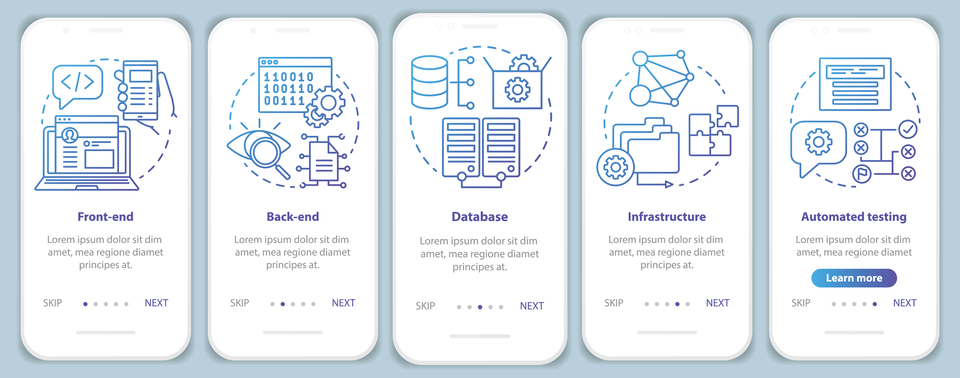A fault is a defect or an error in the software program that, when executed, causes a failure. Faults can occur in any stage of the software program growth process failed test meaning, from necessities gathering to testing. An error in software development is a mistake that a software developer makes when writing code.
A bug refers to defects which signifies that the software program product or the appliance isn’t working as per the adhered requirements set. When we now have any sort of logical error, it causes our code to interrupt, which leads to a bug. It is now that the Automation/ Manual Test Engineers describe this example as a bug. When a failure happens, developers should look into the underlying cause and take the necessary steps to rectify it, corresponding to addressing the flaw or defect that gave rise to the failure. A fault in software growth is a flaw that can make a software program software or system malfunction or give inaccurate outcomes. A flaw is usually brought about by a coding or design drawback within the software that results in an surprising behaviour when the programme is run.

The fault could be prevented by adopting programming techniques, development methodologies, peer evaluate, and code evaluation. Interface defects are the defects that occur during the interplay of users and software program. It contains sophisticated interfaces, platform-based interfaces, or unclear interfaces. These defects prevent users from utilizing the software effortlessly. Backed by the staff of dedicated and dynamic professionals with enriched experience, 360logica, is a reputed offshore software testing company in India. If numerous elements of the applying code rely on each other, a fault may trigger issues in a number of parts.
Understanding The Differences Between Bug, Defect, Error, Failure, And Fault
A defect refers to a scenario when the applying just isn’t working as per the requirement and the precise and expected result of the applying or software are not in sync with one another. When the appliance just isn’t working as per the requirement is knows as defects. It is specified because the aberration from the precise and expected result of the application or software.
For example, in a financial institution utility if the Amount Transfer module just isn’t working for end-users when the end-user tries to transfer money, submit button isn’t working. The fault could occur in software because it has not added the code for fault tolerance, making an application act up. But for a newbie or the inexperienced on this area, all these terminologies may seem synonyms. It turned important to grasp each of those terms independently if the software program would not work as anticipated.
Mistakes may be brought about by numerous issues, together with a lack of expertise or expertise, a misunderstanding of the requirements or the design, or simply an accident. A defect in software program testing refers to the deviation or variation of the software program from the customers or enterprise necessities. It is an issue in software coding that can have an result on the whole program.
Software Testing – Bug Vs Defect Vs Error Vs Fault Vs Failure
It is the one that is generated because of the wrong login, loop, or syntax. The error usually arises in software program; it results in a change in the program’s performance. Software testing is a process to identify bugs, errors, defects, faults, and failures which are the variance between anticipated and precise outcomes.
However, all these differences between bug, defect, errors, faults, and failures slow down the software’s excellence and efficiency. A bug is a flaw in a software program system that causes the system to behave in an unintended method. A programming error causes a program to work poorly, produce incorrect outcomes https://www.globalcloudteam.com/, or crash — an error in software program or hardware that causes a program to malfunction. To prevent bugs, you have to implement test-driven growth, regulate enhanced code growth practices, and extra.
- Bugs, defects, errors, failures, and faults affect completely different parts of an software and influence its usage massively.
- If a QA (Quality Analyst) detect a bug, they’ll reproduce the bug and record it with the help of the bug report template.
- During this process, several terms are used interchangeably, corresponding to bug, defect, error, failure, and fault.
- In this article, we’ll explore the variations between these terms and the way they relate to software program development.
- However, all these differences between bug, defect, errors, faults, and failures slow down the software’s excellence and efficiency.
Testing groups, whereas executing completely different check cases, come across defects. An Error discovered in the growth surroundings before the product is shipped to the customer. A programming error that causes a program to work poorly, produce incorrect results or crash. An error in software program or hardware that causes a program to malfunction. A defect is a non-conformance to a specification or requirement. A defect can be regarded as a deviation from the expected behavior of the software program.
Bug Vs Defect Vs Error Vs Fault Vs Failure
If left untreated, it may lead to failures within the working of the deployed code. Let’s see the difference between defect, bug, error and failure. In basic, we use these phrases every time the system/application acts abnormally. Many of the newbies in Software Testing trade have confusion in using this.
The defect is triggered as a outcome of providing incorrect input, errors in coping, and extra. The error is brought on as a end result of code error, lack of ability to execute, ambiguity in code logic, defective design, logical error, and so forth. The failure is caused due to system errors, human errors, and environmental variables.
The fault is triggered due to wrong design, irregular logic, and more. The defect is recognized by test engineers and is resolved by programmers or builders. It is generated as a result of incorrect logic, syntax, or loop that can impact the end-user expertise significantly. In fundamental terms, an error is calculated by differentiating between the expected results and actual results. Inside a program, when such a scenario comes, it adjustments the application’s functionality, resulting in buyer dissatisfaction.
Past The Basics: A Mac User’s Journey Into Xk6 Installation And Use The Fundamental File Extension
An error is an issue or mistake made by the developer throughout writing the code as a result of which compilation and execution fail. A defect known as an error that’s discovered during the development cycle. A bug is a problem or an issue in the software that causes surprising conduct. Bugs can be launched during the development process, or they could come up from adjustments in the surroundings the place the software program runs. Bugs can manifest in varied ways, corresponding to crashes, incorrect outputs, or user interface points. Software builders utilise quite a lot of strategies to make sure that their work is powerful and reliable, together with testing, design reviews, and cautious coding procedures.

If you’re aiming to excel in roles like Software Tester, QA Engineer, or Test Automation Engineer, explore Complete Guide to Software Testing and Automation. A failure is the shortcoming of the software to perform its meant function. Failures happen when the software program is unable to fulfill the user’s needs or expectations.
What Are Defects?
If an end-user detects a problem within the product, then that specific issue is known as a failure. Understanding the differences between bug, defect, error, failure, and fault might help us higher perceive the software program improvement process. Bugs, defects, and errors could be launched during the development process and can lead to failures when the software program is unable to fulfill the user’s wants or expectations.
When we’ve some coding error, it leads a program to its breakdown, which is called a bug. Error/mistake happens first during the growth course of, and results in defect/bug/fault during the testing course of, then happens a failure – throughout person experience in the product. The bug is brought on because of missing logic, redundant codes, and misguided logic.
A fault is introduced into the software as the results of an error. It is an anomaly in the software that may cause it to behave incorrectly, and never based on its specification. A failure is the lack of a software system or component to perform its required functions inside specified efficiency necessities. Error is a scenario that happens when the Development group or the developer fails to grasp a requirement definition and therefore that misunderstanding gets translated into buggy code.








